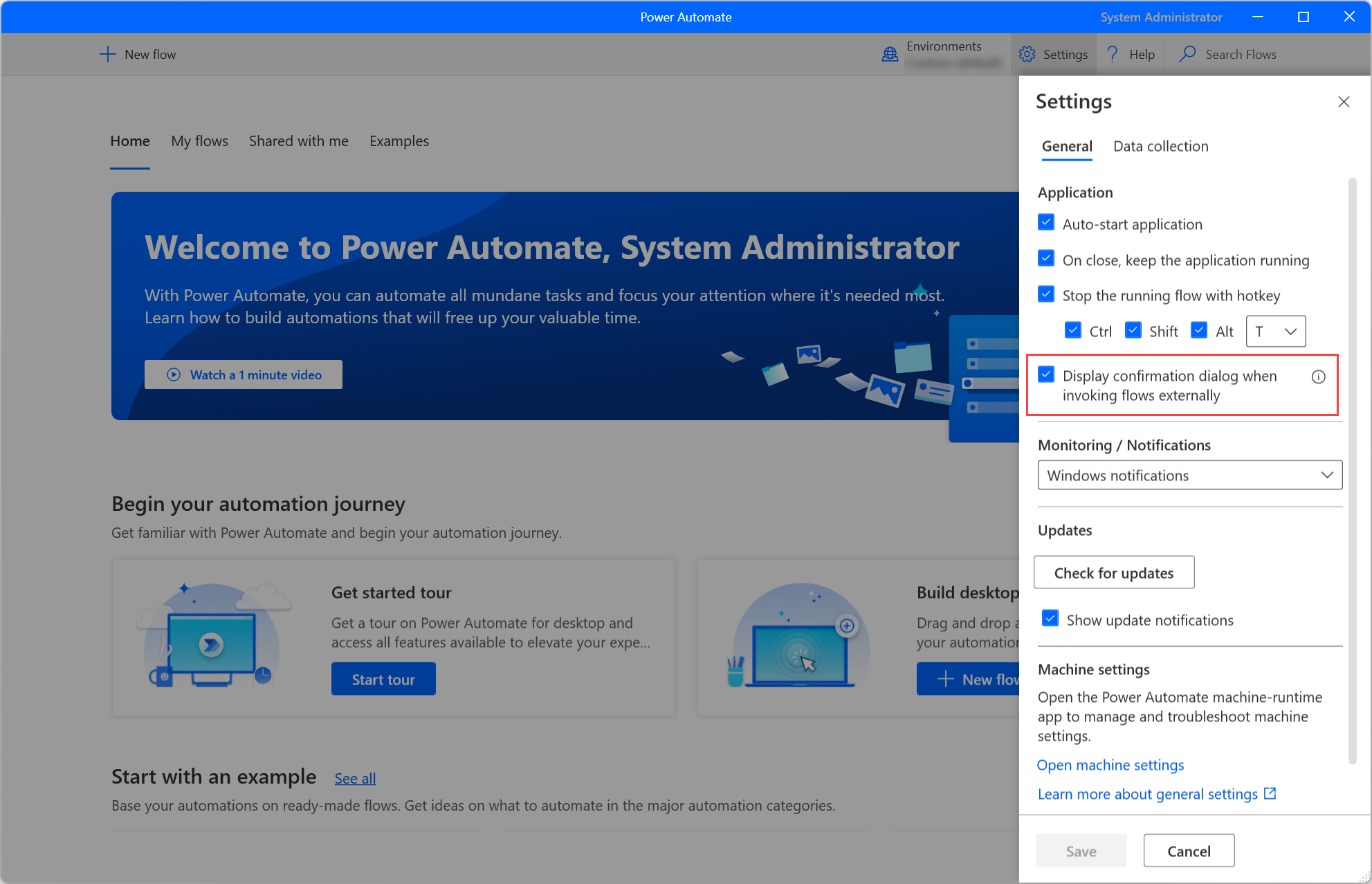

You have created two flows and it's time to test them.Fill out the details and then click the "Save" button. A pop-up window will appear that will ask to write the message box title, message, and other details. Now, again from the "Actions" section, search for the "Display message" action and drag it outside.You will see the first flow is now appearing in the designer window, while on the right side, you will see the corresponding flow variable. Currently, keep things as it is and click on "Save" button. A pop-up window will appear that will ask to set up parameters. Click the drop-down menu of Excel, and drag the "Launch Excel" outside. From the "Actions" section on left, look for "Excel".


Following are the three steps you need to flow: We will instruct Power Automate Desktop to launch Excel and show a message that it has launched the Excel. To make you understand how Power Automate Desktop works, we are creating a simple flow.

You also see the UI elements and Images sections on the same right side. On the right side of the window, you will see the variable section, which helps to send variables into the flow. You can choose the actions, set up the flow, and then save, run, or stop the flow accordingly. On the left side of the Window, you will see the vertical "Actions" section where it lists hundreds of actions that the application can perform on your behalf. It is where you are going to instruct the application on what you want it to do. Now you will see the Power Automate Desktop designer window. Write the name for your flow and then click on the "Create" button. From there, click on "New Flow" located at the top left corner to set up your first flow. You will see an empty dashboard, but it is where all your flows will be showing in the future. Step 2: Launch the ApplicationĪfter installing, open the application. Afterward, open the setup and complete the installation. If you fulfill the pre-requisite, then go to the Office website, sign in to your account, go to all apps page, look for Power Automate Desktop, and download it. To get Power Automate Desktop, you need to have Windows 10 Professional or Windows 10 Enterprise and also a school or work account. As Power Automate Desktop is meant to bring automation in our repetitive processes, below is the step-by-step guide on how to use Microsoft Power Automate Desktop. Besides that, it also lets you use pre-designed drag-and-drop actions or even record your own desktop flows in order to run later automatically. For example, if you want to copy data from one disk to another, you can instruct Power Automate Desktop step-by-step and let it handle all the process for you. It provides an intuitive flow designer with a diverse range of actions including desktop, folders and files, Excel, and lots of other automation capabilities. Microsoft Power Automate Desktop helps to automate most of your desktop repetitive processes.


 0 kommentar(er)
0 kommentar(er)
